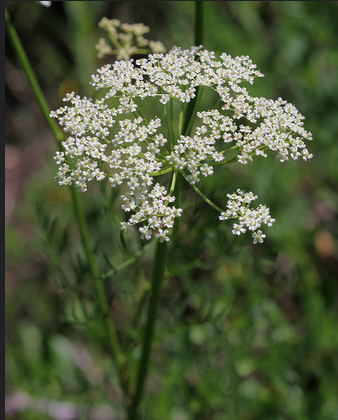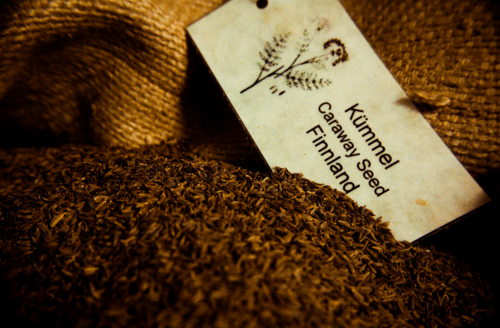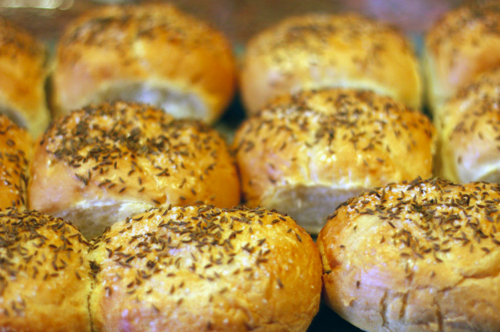
Caraway (Carum cavi) is a biennial herb plant that is easy to grow. It will sow itself once it is planted. It is a hardy plant and will tolerate a tough winter.[1]
Description[edit | edit source]
The leaves of the caraway plant are feathery or rosette-shaped and light green in colour. In the first year, the leaves will be all that the plant produces.[1]
The plant has small clusters of tiny flowers in the summer. The flower colours range from white to pale pink.
Growing caraway[edit | edit source]

Sow caraway seeds in the early autumn (fall) or spring.
When the seedlings have their first true leaves and appear strong, thin to about 20cm apart.
Harvesting caraway[edit | edit source]
Allow the plant to flower and set seed. The seed heads are ready to remove around mid- to late-summer. To remove, cut off the seed heads, just before they ripen fully. You will be able to tell this when you see a light brown colour, the scent is evident and some have begun to fall from the flower head.[1]
Dry the seeds by hanging the seed heads in a paper bag. Keep the bag in a dry and well-ventilated place, to allow the seeds to dry fully. This should only take a few days in good weather.
Uses for caraway[edit | edit source]

Caraway seeds are used in a variety of culinary dishes, and they have a slight hint of aniseed. The seeds are often included in baking, such as: breads (rye or Turkish breads, for example), cakes, biscuits (cookies), buns and festive season recipes. They are also used in soups, stews, goulash, on vegetables (especially cabbage) and even in cheese. Caraway flavour goes well with cabbage and Brussels sprouts.
Some liqueurs are made with caraway seed as a flavouring, such as Aquavit and Kummel.
In the second year of the plant's cycle, the leaves were sometimes used in place of parsley.[1] Caraway leaves are best eaten when young. These leaves have a faint taste of parsley or even dill. Chop and add the young caraway leaves to salad dishes or sprinkle over soups for a garnish.
Caraway seeds are used in numerous national cuisines, including Swedish, Austrian, Hungarian (goulash) and German cooking.